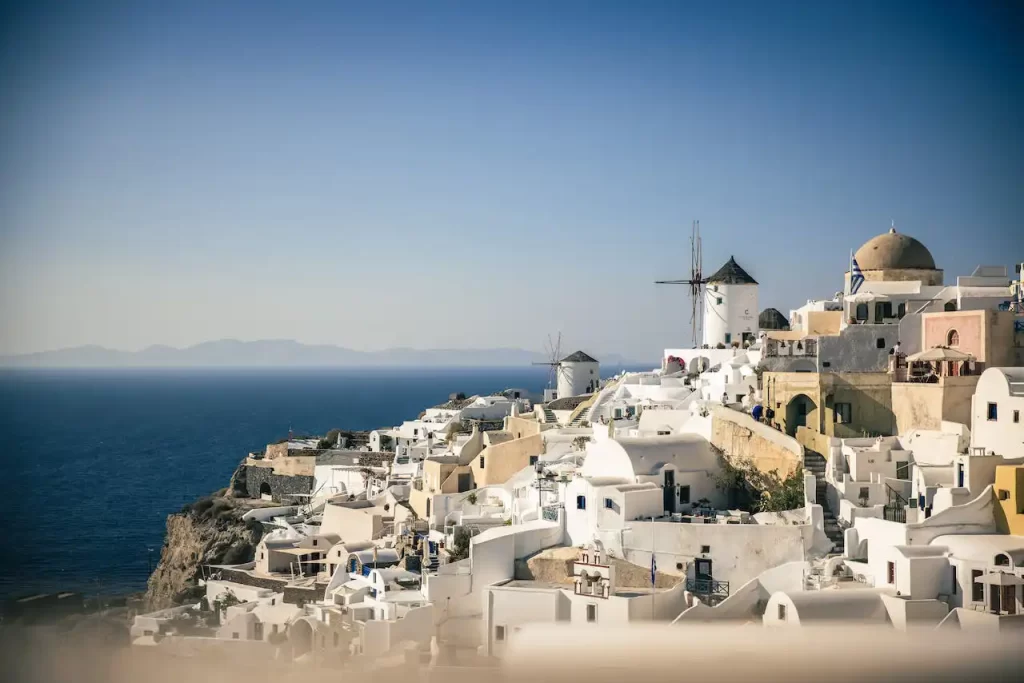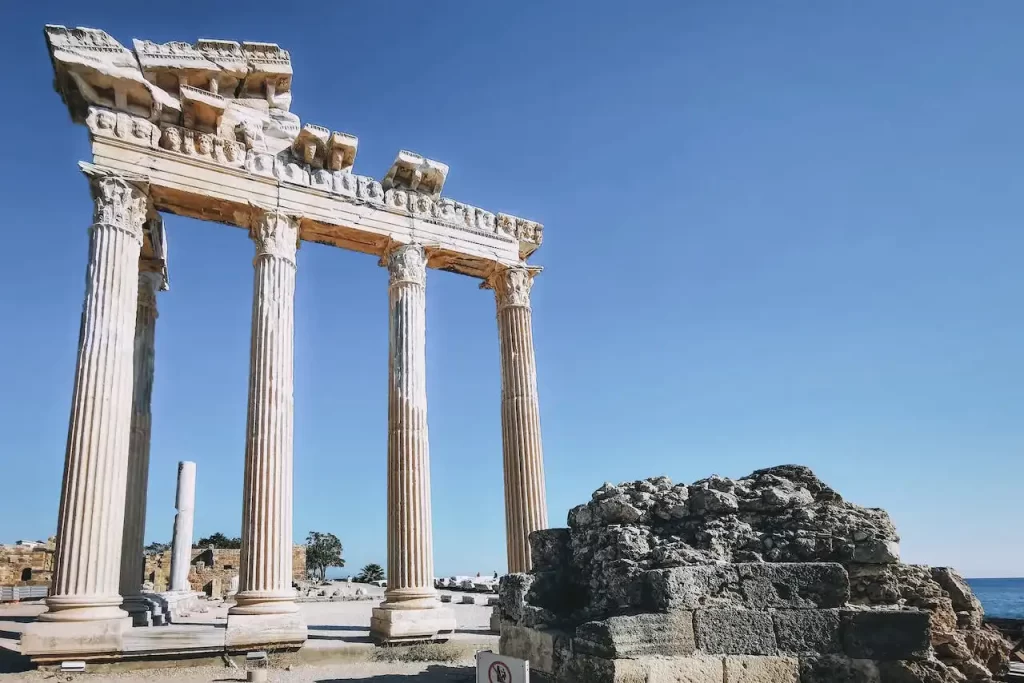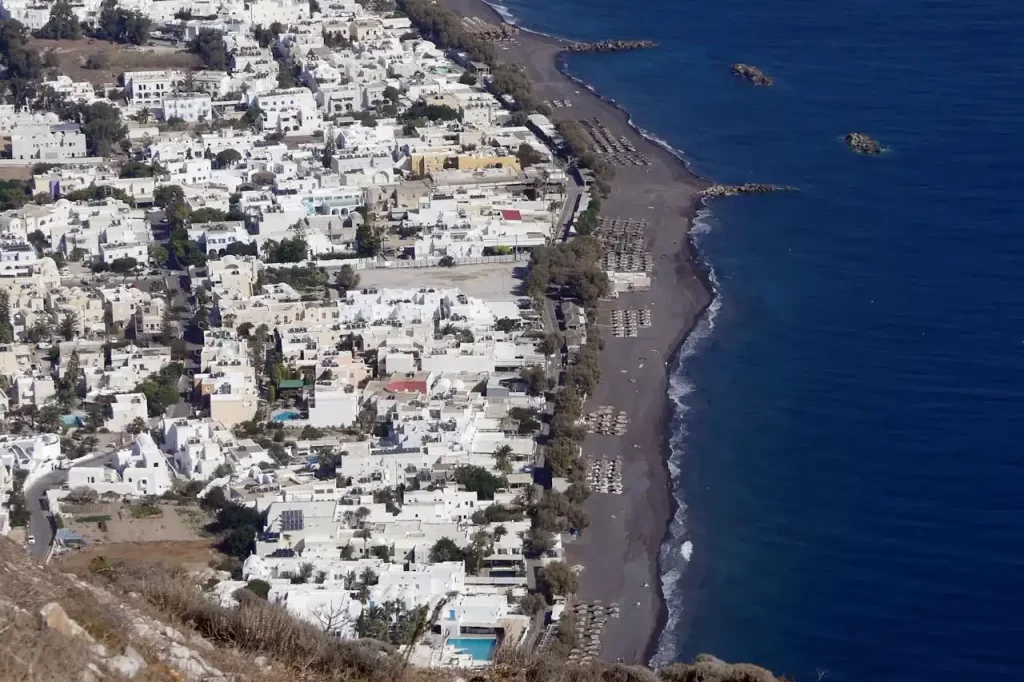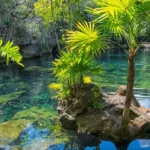Overview of Santorini Travel
Santorini, a gem in the Aegean Sea, is one of Greece’s most enchanting islands. Known for its stunning sunsets, unique volcanic landscapes, and rich history, it attracts tourists from around the world. Whether you’re exploring the picturesque villages, tasting local wines, or unwinding on its unusual beaches, Santorini promises an unforgettable experience. This comprehensive guide delves into the various aspects that make Santorini a must-visit destination, offering insights into its top attractions, cultural experiences, and natural beauty.
1. Oia Village

A Sunset Paradise
Oia is Santorini’s most famous village, celebrated for its breathtaking sunsets that draw crowds every evening. This picturesque village, with its narrow streets, is a labyrinth of shops, cafes, and traditional houses built into the cliffside. The iconic blue-domed churches are among the most photographed spots. Visitors can enjoy leisurely walks, explore art galleries, and indulge in fine dining at restaurants offering spectacular caldera views.
Architectural Splendor
The architecture in Oia is a testament to Cycladic and Venetian influences. The white-washed buildings with blue accents provide a stunning contrast against the deep blue of the Aegean Sea. Luxurious cave hotels offer unique accommodation experiences, blending traditional aesthetics with modern comforts.
Cultural Immersion
Oia is not just about the views; it’s a cultural hub. The Naval Maritime Museum highlights the island’s seafaring history, while local art galleries showcase contemporary Greek and international art. The village also hosts various cultural events and festivals throughout the year, providing a glimpse into the local traditions and customs.
2. Fira, the Capital

Vibrant Urban Center
Fira, the bustling capital of Santorini, is perched dramatically on the edge of the caldera. It’s a vibrant mix of tourism, commerce, and local life. The town’s narrow, winding streets are lined with shops, boutiques, restaurants, and bars, making it a lively hub both day and night.
Historical Insights
Fira is home to several museums, including the Archaeological Museum of Thera, which houses artifacts from the island’s ancient sites. The Museum of Prehistoric Thera offers insights into the island’s history, particularly the Akrotiri excavations. These museums are essential for understanding the rich historical tapestry of Santorini.
Culinary Delights
Fira is renowned for its culinary scene. From traditional Greek tavernas to upscale restaurants, the town caters to all palates. Local specialties include fava (split pea dip), tomatokeftedes (tomato fritters), and fresh seafood. The town also boasts some of the island’s best nightlife, with clubs and bars offering entertainment into the early hours.
3. Wine Tasting

Unique Wine Varietals
Santorini’s volcanic soil gives its wines a distinctive taste. The island is particularly known for Assyrtiko, a crisp, dry white wine, and Vinsanto, a sweet dessert wine. Wine tasting tours offer a journey through the island’s winemaking history, visiting traditional and modern wineries.
Winery Experiences
Wineries like Santo Wines, Venetsanos, and Sigalas offer tastings with stunning views. Visitors can learn about the unique viticulture, including the “kouloura” method of grape growing, and enjoy pairings with local cheeses and delicacies.
Wine Culture
Wine is an integral part of Santorini’s culture and economy. The annual Santorini Wine Festival celebrates this heritage, featuring wine tastings, musical performances, and cultural events. It’s an opportunity to immerse oneself in the local traditions and enjoy the island’s renowned hospitality.
4. Ancient Thera

Historical Exploration
Ancient Thera, situated atop Mesa Vouno mountain, is a significant archaeological site. Founded in the 9th century BCE, the city offers a glimpse into the island’s ancient past. Visitors can explore ruins of temples, houses, and a theater, all with a backdrop of stunning sea views.
Archaeological Significance
The site provides insights into various historical periods, including Hellenistic, Roman, and Byzantine. Key attractions include the Agora (marketplace), the Terrace of Festivals, and the ancient gymnasium. The site’s strategic location also highlights its historical importance in maritime trade.
Breathtaking Scenery
The journey to Ancient Thera is an experience in itself. The winding path up the mountain offers panoramic views of the island, making it a favorite spot for photographers and nature lovers. The site’s blend of history and natural beauty makes it a must-visit for any history enthusiast.
5. Beaches of Santorini

Unique Coastal Landscapes
Santorini’s beaches are unlike any other, thanks to their volcanic origins. The Red Beach, with its striking red volcanic rocks and pebbles, is a natural wonder. Kamari and Perissa beaches, with their black sands, offer a unique seaside experience, complete with sun loungers and beach bars.
Leisure and Activities
These beaches are not just for relaxation; they offer various water sports and activities. Visitors can enjoy snorkeling, diving, and jet skiing. Beachside tavernas and cafes provide refreshments and a taste of local cuisine, making for a perfect day by the sea.
Environmental Awareness
While enjoying Santorini’s beaches, it’s important to be mindful of the environment. The unique geological formations are delicate, and visitors are encouraged to respect the natural habitat. Sustainable tourism practices help preserve these unique landscapes for future generations.
6. Caldera Boat Tours
Exploring the Caldera
A boat tour around the caldera is a quintessential Santorini experience. These tours offer stunning views of the cliffside villages and the opportunity to visit the volcanic islands of Nea Kameni and Palea Kameni.
Hot Springs and Swimming
One of the highlights of these tours is swimming in the natural hot springs around Nea Kameni. The warm, sulfur-rich waters are said to have therapeutic properties. Many tours also include stops at secluded beaches and coves, ideal for swimming and snorkeling.
Sunset Cruises
For a romantic experience, sunset cruises offer breathtaking views of the sun setting over the Aegean Sea. These cruises often include dinner and drinks, making for an unforgettable evening under the stars.
7. Greek Cuisine
Local Delicacies
Santorini’s cuisine is a blend of traditional Greek and Mediterranean flavors. Dishes are made with fresh, local ingredients, including tomatoes, fava beans, capers, and seafood. Specialties like tomatokeftedes, grilled octopus, and moussaka are must-tries.
Dining Experiences
The island offers a range of dining options, from casual tavernas to upscale restaurants. Many eateries provide stunning views of the sea or caldera, enhancing the dining experience. Wine pairings with local varieties add to the culinary delight.
Food Festivals
Santorini hosts food festivals and culinary events, showcasing its gastronomic heritage. These events are a great way to sample a variety of dishes and learn about local cooking traditions.
8. Photography and Art
Capturing Beauty
Santorini is a photographer’s paradise, with its dramatic landscapes, vibrant sunsets, and picturesque villages. Iconic spots like Oia’s blue-domed churches and the caldera view are popular subjects. The island’s unique light and scenery inspire professional and amateur photographers alike.
Artistic Scene
The island’s art scene is thriving, with galleries featuring contemporary art, local crafts, and jewelry. Art lovers can explore exhibitions and workshops, gaining insight into the creative expressions of Greek and international artists.
Cultural Events
Art festivals and cultural events are held throughout the year, offering a platform for artists to showcase their work. These events also provide an opportunity for visitors to engage with the local art community.
9. Hiking from Fira to Oia
Scenic Trails
The hike from Fira to Oia is one of the most scenic in Santorini. The trail follows the edge of the caldera, offering spectacular views of the Aegean Sea and the volcano. The path passes through picturesque villages, including Firostefani and Imerovigli, each with its own charm.
Natural Splendor
The hike is a great way to experience Santorini’s natural beauty. The changing landscapes, from rugged cliffs to peaceful countryside, are a testament to the island’s geological diversity. Spring is a particularly beautiful time to hike, with wildflowers in bloom.
Preparation and Tips
The hike is moderately challenging, so proper footwear and sun protection are essential. Carrying water and snacks is recommended. The trek takes about 2-3 hours, depending on pace and stops along the way. It’s an excellent opportunity for exercise and immersion in the island’s natural splendor.
10. Sunset Watching
Legendary Sunsets
Santorini’s sunsets are legendary, and watching the sun dip into the Aegean Sea is a magical experience. Oia is the most famous spot for sunset viewing, but there are many other locations around the island that offer equally stunning vistas.
Romantic Atmosphere
The sunset creates a romantic and serene atmosphere, making it a popular moment for couples. Many choose this time for proposals or to celebrate special occasions. The play of colors in the sky, from golden hues to deep purples, is a breathtaking sight.
Best Viewing Spots
Apart from Oia, Fira, Imerovigli, and the Akrotiri Lighthouse are excellent spots for sunset viewing. Arriving early to secure a good spot is advisable, especially during the peak tourist season.
FAQs
- What is the best time to visit Santorini? The best time to visit Santorini is from late spring to early fall (May to October), when the weather is sunny and warm. However, the peak tourist season is during the summer months, from June to August, when the island is very crowded. For a more peaceful experience with pleasant weather, consider visiting in May, September, or October.
- How do I get around Santorini? Santorini can be navigated by public buses, which are an affordable way to travel between major towns and attractions. Renting a car, scooter, or ATV is a popular option for more flexibility and access to less-visited areas. Taxis are available, but can be more expensive. Walking is also a great way to explore the smaller villages and scenic paths.
- Are there any cultural customs I should be aware of? In Santorini, as in the rest of Greece, it’s important to be respectful of local customs. Dress modestly when visiting churches and monasteries. It’s customary to greet people with a friendly “Kalimera” (good morning) or “Kalispera” (good evening). Tipping is appreciated in restaurants and for services, usually around 10%.
- Can I visit the volcano? Yes, you can visit the active volcano on Nea Kameni, which is part of a boat tour around the caldera. Visitors can walk up to the crater and learn about the volcano’s history and geology. It’s a unique experience but requires a bit of physical effort and proper footwear.
- Is Santorini suitable for families? Santorini is generally considered a romantic destination, but it also offers plenty for families. Beaches, boat tours, and exploring the villages can be enjoyable for children. However, the island’s terrain with steep cliffs and steps might be challenging for very young children or strollers.
- What are the must-try foods in Santorini? Santorini’s cuisine is a delight. Must-try dishes include fava (split pea puree), tomatokeftedes (tomato fritters), fresh grilled seafood, and local cheeses like Chloro. Also, don’t miss trying the local wines, especially Assyrtiko, a crisp white wine.











